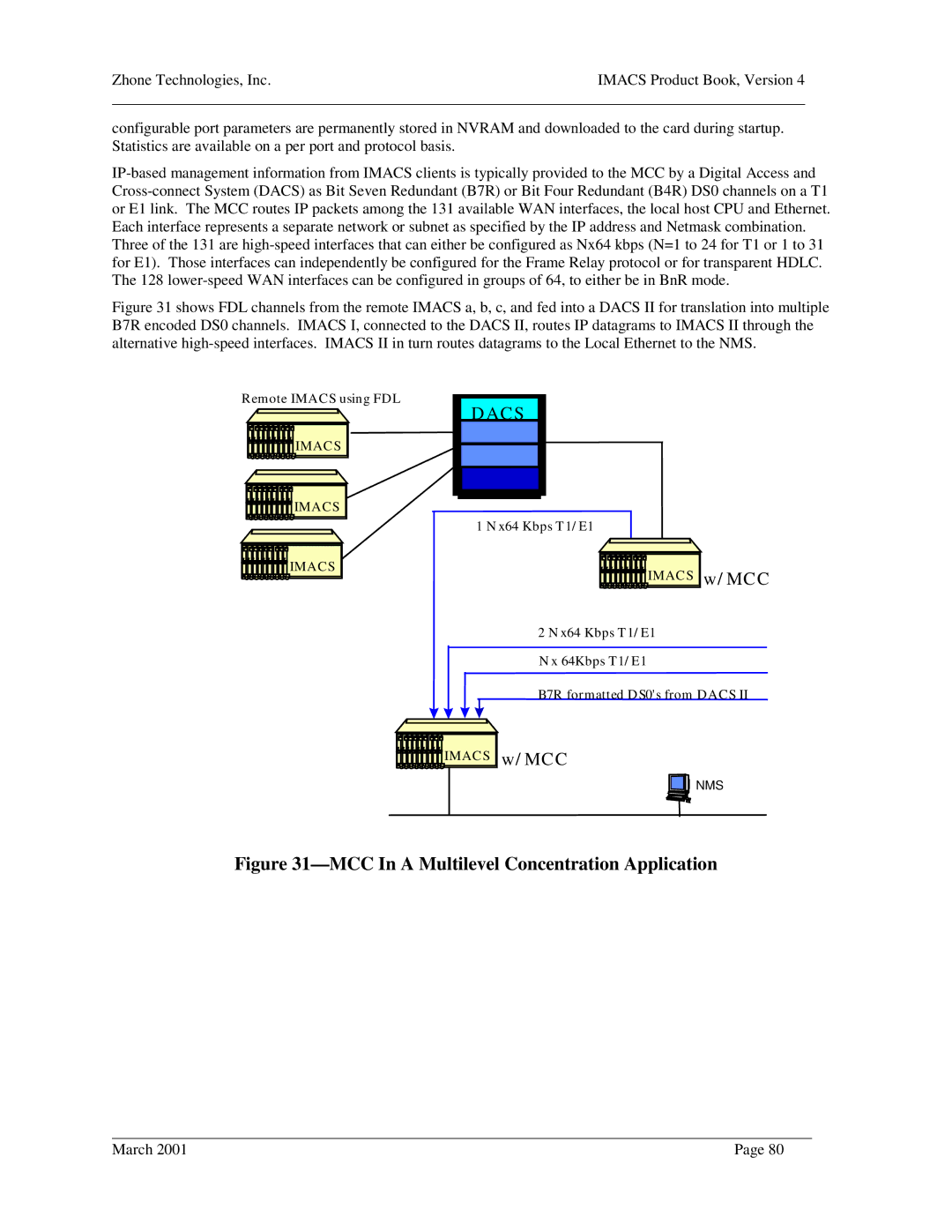
Zhone Technologies, Inc. | IMACS Product Book, Version 4 |
configurable port parameters are permanently stored in NVRAM and downloaded to the card during startup. Statistics are available on a per port and protocol basis.
Figure 31 shows FDL channels from the remote IMACS a, b, c, and fed into a DACS II for translation into multiple B7R encoded DS0 channels. IMACS I, connected to the DACS II, routes IP datagrams to IMACS II through the alternative high-speed interfaces. IMACS II in turn routes datagrams to the Local Ethernet to the NMS.
Remote IMACS using FDL
IMACS |
IMACS |
IMACS |
DAC S
1 Nx64 Kbps T1/E1
![]()
![]()
![]()
![]()
![]()
![]()
![]()
![]()
![]()
![]()
![]()
![]()
![]() IMACS
IMACS ![]() w/MC C
w/MC C
2 Nx64 Kbps T1/E1 Nx 64Kbps T1/E1
B7R formatted DS0's from DACS II
IMACS |
w/MC C
![]() NMS
NMS
Figure 31—MCC In A Multilevel Concentration Application
March 2001 | Page 80 |
